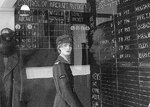Nice shots Terry!
Navigation
Install the app
How to install the app on iOS
Follow along with the video below to see how to install our site as a web app on your home screen.
Note: This feature may not be available in some browsers.
More options
You are using an out of date browser. It may not display this or other websites correctly.
You should upgrade or use an alternative browser.
You should upgrade or use an alternative browser.
RAF Elvington - A Pictorial Tour.
- Thread starter Airframes
- Start date
Ad: This forum contains affiliate links to products on Amazon and eBay. More information in Terms and rules
More options
Who Replied?- Thread starter
- #82
Airframes
Benevolens Magister
Aaron Brooks Wolters
Brigadier General
I got that when I first saw it. Good job with getting it to stand out. It does look like she's looking at him. Maybe the manikin has a thing for Karl.
vikingBerserker
Lieutenant General

fubar57
General
Great photos Terry.My favorite one is on the first page. Though it's too far away to be sure, it looks like the three of you waiting for church to open to beg forgiveness for that which you are about commit.
Geo
Geo
dont blame her Aaron, good looking bloke that ghost !!!!I got that when I first saw it. Good job with getting it to stand out. It does look like she's looking at him. Maybe the manikin has a thing for Karl.
Aaron Brooks Wolters
Brigadier General

Lucky13
Forum Mascot
Still, a ghost of his former self!
Aaron Brooks Wolters
Brigadier General
I'll take your word for it Jan.
A4K
Brigadier General
Strewth...

- Thread starter
- #92
Airframes
Benevolens Magister
It's OK chaps, I'm buying Karl a new mirror for his Birthday!
Anyway, on with the tour, and a brief look at part of the Bomber Command exhibition.
PIC 1. The entrance to the Exhibition, in the original Briefing Room building.
PIC 2. The same building in 1943, with crews boarding the transport which will take them to the dispersals.
PICS 3 and 4. The large wall frescos in part of the exhibition, providing some sobering facts and figures.
PIC 5. A general view of some of the interesting artefacts in the '77 Squadron' room. This Squadron, equipped with Halifax bombers, was stationed at Elvington before moving to Full Sutton in 1944. The Squadron suffered heavy losses attacking targets in Germany, particularly 'The Big City' - Berlin - and by the end of the war in Europe, had lost almost 80 aircraft, with over five hundred aircrew either killed, MIA or PoW.
PIC 6. At an Elvington dispersal in late 1943, is Halifax DT807 of 77 Sqn, coded KN-R. Everday life continues, with the farm labourers gathering the hay harvest.
PIC 7. A WW2 search light, typical of those used in batteries to 'cone' an unfortunate bomber.
PIC 8. This huge photo-mural shows the devastation in the centre of Hannover, following night raids by Bomber Command, and day light attacks by 8th USAAF.
PIC 9. A close up of the rear gun turret from a Lancaster.
PIC 10. Karl (the real one, not the ghost!) gives some scale to this huge Halifax main wheel.
PIC 11. Typical RAF bomb trolley. The bombs were wedged on the trolley with wooden blocks, and would have the release shackles fitted before being winched into the bomb bay.
PIC 12. This is a 'Goose neck' flare, used to mark the edge of the runway. It's basically a can filed with lamp oil, with a wick in the 'spout', which was lit to provide a flickering flame. Lines of these were placed on either side of the entire length of the runway, to provide rudimentary runway lighting for those airfields without electric lights, which was the case in the majority of wartime stations. They were also used as a back-up if the power failed on properly equipped stations.
Seeing some of these exhibits really emphasises what operational conditions must have been like 70 years ago, with personnel and equipment having to contend with all sorts of privations, from atrocious weather, to very basic facilities. With so many airfields grouped so close, and in many cases with virtually overlapping circuits, it's little wonder there were so many losses due to causes other than enemy action.
Thanks again for your continued interest, and I'll post further photos of this unique museum soon.
Anyway, on with the tour, and a brief look at part of the Bomber Command exhibition.
PIC 1. The entrance to the Exhibition, in the original Briefing Room building.
PIC 2. The same building in 1943, with crews boarding the transport which will take them to the dispersals.
PICS 3 and 4. The large wall frescos in part of the exhibition, providing some sobering facts and figures.
PIC 5. A general view of some of the interesting artefacts in the '77 Squadron' room. This Squadron, equipped with Halifax bombers, was stationed at Elvington before moving to Full Sutton in 1944. The Squadron suffered heavy losses attacking targets in Germany, particularly 'The Big City' - Berlin - and by the end of the war in Europe, had lost almost 80 aircraft, with over five hundred aircrew either killed, MIA or PoW.
PIC 6. At an Elvington dispersal in late 1943, is Halifax DT807 of 77 Sqn, coded KN-R. Everday life continues, with the farm labourers gathering the hay harvest.
PIC 7. A WW2 search light, typical of those used in batteries to 'cone' an unfortunate bomber.
PIC 8. This huge photo-mural shows the devastation in the centre of Hannover, following night raids by Bomber Command, and day light attacks by 8th USAAF.
PIC 9. A close up of the rear gun turret from a Lancaster.
PIC 10. Karl (the real one, not the ghost!) gives some scale to this huge Halifax main wheel.
PIC 11. Typical RAF bomb trolley. The bombs were wedged on the trolley with wooden blocks, and would have the release shackles fitted before being winched into the bomb bay.
PIC 12. This is a 'Goose neck' flare, used to mark the edge of the runway. It's basically a can filed with lamp oil, with a wick in the 'spout', which was lit to provide a flickering flame. Lines of these were placed on either side of the entire length of the runway, to provide rudimentary runway lighting for those airfields without electric lights, which was the case in the majority of wartime stations. They were also used as a back-up if the power failed on properly equipped stations.
Seeing some of these exhibits really emphasises what operational conditions must have been like 70 years ago, with personnel and equipment having to contend with all sorts of privations, from atrocious weather, to very basic facilities. With so many airfields grouped so close, and in many cases with virtually overlapping circuits, it's little wonder there were so many losses due to causes other than enemy action.
Thanks again for your continued interest, and I'll post further photos of this unique museum soon.
Attachments
-
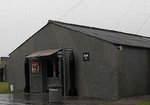 Elvington 232.jpg76.1 KB · Views: 124
Elvington 232.jpg76.1 KB · Views: 124 -
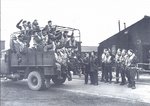 Elvington 294.jpg107.7 KB · Views: 130
Elvington 294.jpg107.7 KB · Views: 130 -
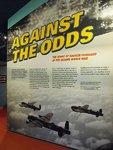 Elvington 189.jpg72.8 KB · Views: 133
Elvington 189.jpg72.8 KB · Views: 133 -
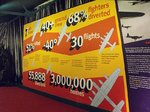 Elvington 171.jpg144 KB · Views: 122
Elvington 171.jpg144 KB · Views: 122 -
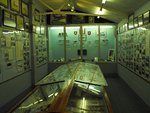 Elvington 179.jpg116.1 KB · Views: 134
Elvington 179.jpg116.1 KB · Views: 134 -
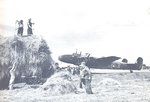 Elvington 295.jpg89.6 KB · Views: 128
Elvington 295.jpg89.6 KB · Views: 128 -
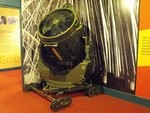 Elvington 172.jpg146.4 KB · Views: 130
Elvington 172.jpg146.4 KB · Views: 130 -
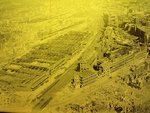 Elvington 199.jpg144.3 KB · Views: 131
Elvington 199.jpg144.3 KB · Views: 131 -
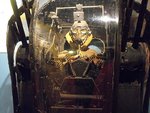 Elvington 173.jpg129.3 KB · Views: 127
Elvington 173.jpg129.3 KB · Views: 127 -
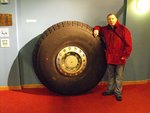 Elvington 169.jpg110.7 KB · Views: 130
Elvington 169.jpg110.7 KB · Views: 130 -
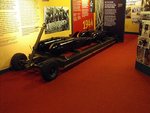 Elvington 191.jpg132.6 KB · Views: 131
Elvington 191.jpg132.6 KB · Views: 131 -
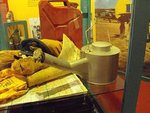 Elvington 177.jpg136.2 KB · Views: 139
Elvington 177.jpg136.2 KB · Views: 139
Better make it an 'unbreakable' one Terry 
Good shots! Keep them coming.
Good shots! Keep them coming.
forgot how big that wheel was...... or am i that much of a short a**e !!!!!!
vikingBerserker
Lieutenant General

Cool shots!
Crimea_River
Marshal
forgot how big that wheel was...... or am i that much of a short a**e !!!!!!
It's really a wheel from a Morris Mini!
Great shots and descriptions Terry!
A4K
Brigadier General
I disagree Andy - the markings and tread pattern definitely indicate the Mk.1 A1 front wheel of a 1965 Vespa Moped... 
Great shots again Terry, I like the 'then and now' comparison of the briefing room especially.
Interesting too the similarity between the Haifax wheel and those of the Lanc. Same manufacturer?
Great shots again Terry, I like the 'then and now' comparison of the briefing room especially.
Interesting too the similarity between the Haifax wheel and those of the Lanc. Same manufacturer?
Hotntot
Senior Airman
Great shots Terry. Really appreciate the effort to put all this together. Looks like it was a well worth visit despite the weather. Incidentally, I'm currently building a Nissen hut -1941/42 period. Do you know, or does anybody else know, what would be a reasonable colour for the interior? Humbrol 90 Beige Green or Humbrol 30 Dark Green (same as exterior), or something else?
Top stuff Terry!
- Thread starter
- #100
Airframes
Benevolens Magister
Thanks guys, more soon.
Interior colour of the Nissen hut could depend on whether it was lined or not - most usually the latter. The colour was normally a light grey or cream, but could vary, and also depended on what use the building was being put to. They were often un-painted, being left in the original very dark grey factory coating.
When used as offices or as Officer's or Sergeants Mess, they were often lined with fibre board, and again painted cream, sometimes the 'institutional' colour scheme of green bottom half of wall, cream top.
I'll be posting pics later showing typical airmens accommodation, which might help.
Interior colour of the Nissen hut could depend on whether it was lined or not - most usually the latter. The colour was normally a light grey or cream, but could vary, and also depended on what use the building was being put to. They were often un-painted, being left in the original very dark grey factory coating.
When used as offices or as Officer's or Sergeants Mess, they were often lined with fibre board, and again painted cream, sometimes the 'institutional' colour scheme of green bottom half of wall, cream top.
I'll be posting pics later showing typical airmens accommodation, which might help.
Users who are viewing this thread
Total: 1 (members: 0, guests: 1)

